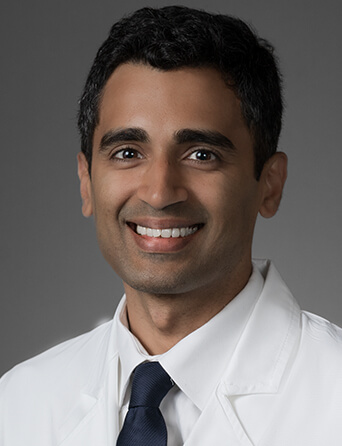Join Our eNewsletter!
Subscribe to our monthly newsletter to receive encouraging advice to help you lead a healthy lifestyle.

You Don’t Have to Carry the Weight of Obesity
Morbid obesity can negatively affect every part of your life. It can make otherwise simple tasks nearly impossible, put significant strain on your relationships, and cause a host of serious health problems. If you’ve tried everything in terms of diet and exercise to lose the weight, there is another option – bariatric surgery.
Who Qualifies for Bariatric Surgery?
Bariatric surgery can be life-changing for people who struggle with morbid obesity, which is defined as having a BMI (body mass index) of 40 or higher or being more than 100 pounds overweight. An individual is also a candidate for bariatric surgery if they have a BMI of 35 or higher and have at least one or more obesity-related health condition, which includes but isn’t limited to Type 2 diabetes, hypertension, high cholesterol, osteoarthritis, or nonalcoholic fatty liver disease. You can check your BMI here by entering your height and weight.
Most bariatric surgeons also require a mental health assessment prior to the procedure to determine if an individual has any psychological or substance abuse issues that would inhibit a positive surgical outcome. Completing three or more visits with a registered dietician is also typically required before bariatric surgery. An individual should learn healthy eating and exercise habits before surgery in order to maximize and sustain their weight loss after surgery. Bariatric surgery is currently the most effective weight loss tool available. That being said, if you don’t develop and stick with a healthy diet and exercise regimen, you will gain the weight back after surgery.

Bariatric Surgery Options
While there are several types of weight loss surgery procedures, all of them reduce the size of the stomach so you feel fuller sooner and eat less. They also alter metabolism, or the way the body burns calories.
At Kelsey-Seybold, I specialize in three surgical options – sleeve gastrectomy, gastric bypass, and loop duodenal switch (SADI-S) – which I discuss with my patients while taking into account their medical histories, conditions, and expectations. During our initial visit, if I haven’t explained your options so that you leave fully understanding the pros and cons of each procedure, I haven’t done my job effectively. The goal is to help you find the right surgical option for your goals and expectations.
All three surgical options are done laparoscopically, meaning small incisions are made ranging from 1 to 2 cm in size. Most patients stay one night in the hospital and go home the following morning. Typically, patients take about one week off from work after surgery unless they have a job that requires heavy lifting. Heavy lifting of more than 15 pounds is restricted until four to six weeks after surgery. The diet before and after surgery is the same regardless of which surgery you choose.
Sleeve Gastrectomy
Also known as gastric sleeve, sleeve gastrectomy is the most popular bariatric surgery option currently performed. During the procedure, about 75% of the stomach is removed, leaving a tube-shaped portion about the size and shape of a banana called a sleeve. The small intestine isn’t modified during this procedure. On average with this operation, patients lose about 55% to 65% of their excess body weight. This means if you weigh 250 pounds and your ideal body weight is 150 pounds, you can expect to lose 55 to 65 pounds. Sleeve gastrectomy has fewer lasting issues compared to the gastric bypass and loop duodenal switch procedures, but it can cause long-term gastric reflux or heartburn. Most of the time, this can be controlled with medication. Overall, sleeve gastrectomy is a good option for patients with a BMI under 45 who don’t have severe reflux or heartburn.
Gastric Bypass Surgery
The gastric bypass procedure has been performed since 1954 and is now done laparoscopically. During this procedure, the stomach is divided, creating what’s called a gastric pouch, which is about the size of your thumb. The small intestine is then connected to the gastric pouch, so that the food you eat goes into the pouch and then into the small intestine. Food will mix with all of the digestive enzymes from your pancreas and liver bile further downstream. Not only does this help with portion control like the gastric sleeve procedure, but you also absorb a little less fat, and it alters your gastrointestinal hormones. As a result, gastric bypass tends to be more effective, on average, than sleeve gastrectomy in terms of weight loss, curing Type 2 diabetes and eliminating hypertension and hyperlipidemia. It also tends to treat acid reflux and heartburn. The downside to gastric bypass is the long-term risk of marginal ulcers, dumping syndrome, and internal hernias. Overall, this is a good option for patients with a BMI over 45 with severe reflux who don’t use tobacco products or NSAID pain relievers (Aleve, ibuprofen, Motrin, aspirin, etc.), and who don’t have an autoimmune disorder.
Loop Duodenal Switch
The laparoscopic loop duodenal switch (SADI-S) surgery is a new procedure that’s gaining popularity. First, a sleeve gastrectomy is performed, removing about 75% of the stomach. Next, the first portion of the small intestine, the duodenum, is cut and reconnected to the small intestine much further downstream. In some ways, this operation combines the sleeve gastrectomy and gastric bypass procedures. This option is great for weight loss and curing conditions such as Type 2 diabetes, hypertension, and high cholesterol. Theoretically, this operation has significantly less risk of marginal ulcers, dumping syndrome, and internal hernias compared to gastric bypass. As of now, we don’t have a clear picture of how it affects gastric reflux. It’s also extremely important that patients stick to their diets and take the required vitamins, since the risk of malnutrition and vitamin deficiencies is higher with this procedure. Overall, this is a good option for patients with a BMI over 45 without severe reflux or heartburn.

Benefits of Bariatric Surgery
The most obvious benefit of bariatric surgery is weight loss. Most people lose 50% to 80% of their excess body weight within a year or two after surgery. By 12 to 18 months, many patients lose around 100 pounds. It’s important to note, however, that bariatric surgery isn’t the end of the journey. After undergoing the procedure, you can gain weight back if you don’t adhere to strict lifestyle changes.
In addition to weight loss, bariatric surgery also offers the following benefits:
- It teaches you how to maintain a healthy diet and exercise regimen and how to have a healthier relationship with food.
- It can train you to not overeat and lessen your desire to eat too much by inhibiting hormones that stimulate appetite.
- It lowers your risk of death associated with heart disease, diabetes, and cancer.
- It can return your blood pressure and cholesterol to normal numbers without the need for medication.
- It can reduce your need for insulin and other diabetes medication.
- It takes pressure off your joints and improves mobility.
- It can eliminate sleep apnea and the need to use a CPAP machine.
- It can result in improved self-esteem and confidence and reduce depression symptoms.
- It can give you increased energy to exercise and engage in more activities you enjoy.
If you’re ready to lose weight and improve your quality of life, the Kelsey-Seybold bariatric surgery team can determine if you’re a candidate for weight loss surgery and start you on the journey toward a healthier, happier you.




